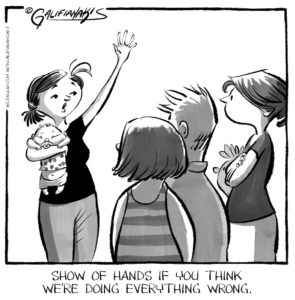Teacher shortages made worse by the pandemic show no signs of easing again this year in many parts of the country.
Vance Varner is heading into another school year desperately searching for teachers and staff members: an English instructor, a special education teacher, a speech therapist.
Varner, the superintendent of schools in Mifflin County, Pennsylvania, a rural community 30 minutes from the Penn State campus, said four of his teacher positions are still vacant less than a month before the start of school. He said that with some positions getting zero applications, he is preparing to fill some of the vacancies with people who have no teaching experience or training, which he rarely had to do a decade ago.
“There’s a perfect storm in education right now, especially in rural communities such as ours,” said Varner, who has worked as a teacher and an administrator in Mifflin County for 25 years.
As millions of students get ready to head back to the classroom, school districts are once again scrambling to fill jobs as teacher shortages aggravated by the coronavirus pandemic show little signs of improving for yet another school year, according to interviews with more than a dozen academic researchers, teachers and administrators in rural, suburban and urban school districts.
Teachers aren’t just trying to help students catch up from pandemic-era learning losses — many are also at the center of a pitched culture war as politicians accuse them of trying to indoctrinate children and turn their syllabuses into campaign fodder.
But many education leaders say the real problem in classrooms is the lack of instructors.
“At first it was a teacher shortage. Then there was a teacher shortage crisis. Then it was a teacher shortage catastrophe, and it just escalates,” said Mark Klaisner, the president of the Illinois Association of Regional Superintendents of Schools. “Our kids deserve so much better, and it just feels almost criminal, because we’re not providing the quality that we would if we could find the candidates.”
Administrators say that to deal with the staffing shortfalls, they are relying again this year on long-term substitute teachers, hiring emergency certified teachers with no teaching qualifications or experience, bringing in teachers from overseas, and increasing class sizes. It means yet another year when many students won’t be able to get the support they need as standardized tests show kids falling behind in key areas, educators said.
“This has an impact on kids’ learning precisely at a time where we need to be accelerating learning,” said Ed Fuller, an education professor at Penn State. “We don’t have enough teachers and enough principals to fill all the positions, and we have lots of turnover. So that’s making it very difficult to accelerate the kids back to where they should have been had the pandemic not happened.”
Klaisner said his colleagues across Illinois tell him the problem is only getting worse despite efforts by policymakers, including legislation to raise minimum teacher pay. Some superintendents are discussing whether they will have to send kids to neighboring districts because they don’t have enough teachers, he said. Others are filling the gaps with teachers who aren’t fully certified, as in one district in central Illinois where a middle school doesn’t have a single teacher who is appropriately certified for the subject being taught, Klaisner said.
“It’s almost down to can you find a pulse and a heartbeat, and that’ll work,” he said of filling job vacancies.
While some school districts have long struggled to find enough teachers, the shortages have become more widespread and severe in many regions since the start of the pandemic, which education researchers say triggered a wave of early retirements, along with resignations from burned-out educators.
There is little nationwide data to show how many teachers have left the workforce in recent years. State surveys from a variety of regions show a growing trend of teacher resignations. Pennsylvania had the largest increase in teacher attrition on record last year, with 7.7% of all teachers leaving their jobs, according to research by Fuller. In Washington state, the teacher attrition rate was 8.91% last year, the highest in 37 years. In Maine, more than 2,000 teachers and other educators quit or retired last year, the most in the past seven years, according to the Maine Public Employee Retirement System.
At the same time, there has been a decrease in the number of college graduates going into teaching that predates the pandemic. Relatively low pay in a strong labor market and political infighting that has put teachers at the center of culture wars on issues like race and gender have also fueled the trends, said teachers, administrators and researchers.
“It’s a lack of respect that the position seems to have right now,” said Trina Berg, who teaches earth and space science in the Phoenix suburb of Peoria. “We’re under attack, unfortunately, by different parent groups and different political groups. And then everything kind of just builds up on you.”
Berg, who is also the president of the Peoria Education Association teachers union, said her district has 10 special education teacher openings, five elementary school openings and 13 middle school vacancies. A district spokesperson said the number of openings this year was similar to what the district has had the past several years.
“It’s exhausting. It’s tiring. You get kids who roll up into high school who might have had long-term subs, no math teacher, no science teacher for at least a year, sometimes more,” Berg said. “When you have openings, larger class sizes, that all leads to more teacher burnout, which just causes the problem to become worse.”
Varner said that five years ago in Mifflin County, his district would get 15 to 30 applications for an opening. Now it’s a victory if he gets five. He said his district’s relatively low salary, about $46,000 for a new teacher, is one of his biggest hurdles to recruiting. In nearby State College, Pennsylvania, where many teachers live, the starting salary is $11,000 higher. He recently lost an English teacher with more than a decade of experience to another district where he estimates the teacher could make $8,000 to $12,000 more a year.
He also blames a wider decline in the number of new teachers. Applications for teaching licenses in Pennsylvania have fallen by 67% since 2010.
To make up for the shortage, the state has been issuing more emergency teacher certifications, which allow people with no teaching experience or training to be able to work as full-time teachers. Now the state is issuing more emergency teaching permits than full teaching certificates to new college graduates.
Almost half of the 45 people hired in Mifflin County to fill teaching roles last year, as well as 75% of special education teachers, had no formal training as teachers and were working under the state’s emergency teacher certification program, Varner said.
“We have great people who care about kids, and they could be an incredible teacher in four or five years, but they have a lot of learning to do,” Varner said.
In Lancaster, Pennsylvania, Joseph Torres, the dean of students at George Washington Elementary School, said his school will most likely have to start the year again with at least one long-term substitute teacher in a classroom.
“I don’t want to say our kids are hurting, but that is the fact: Kids are hurting. They are suffering,” said Torres, who is also the local president of the Lancaster Education Association teachers union. “That first pandemic group came back into a different educational world that is not the one that you and I went through.”
To fill the staffing holes last year, Torres said, he and his colleagues frequently juggled multiple roles.
“I’ve had to be the secretary, cover the door; I’ve had to step in at lunches and recess. I have packed lunches, served lunches, breakfasts,” Torres said. “It’s all hands on deck.”
Ernest Williams has been on the front lines of two other areas with particularly severe shortages in North Carolina — bus drivers and substitute teachers. On a typical day, Williams starts his bus driving shift at 6:15 a.m., picking up elementary school students in Vance County, then works as a teaching assistant for a third grade class at the local elementary school.
But in addition to those two jobs, last year, he said, he was often asked to fill in as a substitute teacher, taking him away from his third graders, then called on to pick up extra bus driving shifts in the afternoon.
“I had to watch a lot of classes, because they couldn’t find anybody to sub. I’d get off the bus, I’d clock in, and a lot of times the assistant principal would say: ‘We need you today. We can’t find anybody,’” Williams said. “I leave early in the morning. I get home late.”
While some saw teaching shortages as a post-pandemic hiccup, school administrators are treating them as the new normal and coming up with longer-term strategies to adjust to shortages, such as recruiting teachers from overseas. In the Phoenix suburb of Maricopa, about 1 in 4 teaching positions will be filled this year by teachers recruited from overseas, many of them coming from the Philippines, said Tom Beckett, Maricopa’s assistant superintendent of human resources.
“Our foreign national teachers, really, they’ve been a godsend,” Beckett said. “I’m not sure what we would do if we did not have that avenue.”
Almost half of the 33 positions in the Altar Valley Elementary School District, about 30 minutes from Tucson, are filled with teachers recruited from overseas, including eight from the Philippines who are starting this year, said David Dumon, the district’s superintendent. Without those teachers, Dumon said, the positions would most likely have gone unfilled, because he got only a handful of applications.
“There just aren’t people applying for our jobs, Dumon said.
In Mifflin County, Varner is still hopeful that some members of the community will raise their hands at the last minute to help fill his openings. But his optimism is tenuous.
“We’ve always been able to do it. I’m trying to be optimistic that we can do it this year,” Varner said. “But there is going to be a day that we’re going to have an empty classroom.”




